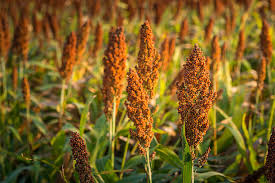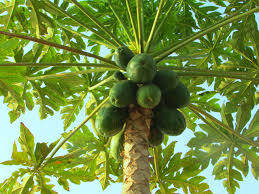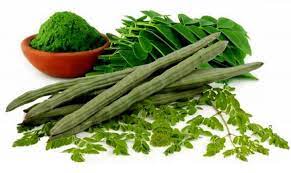
Sorghum (scientific Sorghum), is a cereal from Ethiopia that belongs to the Poaceae family of grasses. It is frequently used in India and Africa, where it is known under the name “kafir”. Although it is not well known in Europe, it is the fifth most cultivated cereal in the world.
Similar in appearance to chickpeas and corn, the grains are small and round, and the most common colors are white, bronze and ocher. The white grain is used for human and animal feed, the yellow for fodder, and the brown for beer production.
Its composition is very similar to corn, it has a high carbohydrate content, low fat content and is a source of B vitamins. It does not contain gluten and stands out for its high fiber content.
In the countries where it is grown the most, it is used as food, as animal feed or biofuel. We should keep in mind that only sorghum grains can be consumed, as the fresh shoots and roots of sprouted sorghum and their extracts are toxic.
The global sorghum seed market size grew from $1.85 billion in 2022 to $1.99 billion in 2023 at a compound annual growth rate (CAGR) of seven point two percent (7.2%) and it is expected to grow to $2.46 billion in 2027 at a compound annual growth rate (CAGR) of five point five percent (5.5%).
The rising awareness of a healthy lifestyle coupled with the growing trend of a healthy diet is contributing to the growth of the sorghum seed market. Consumer behaviour towards healthy food consumption has shifted significantly in recent years as a result of increased awareness of health and changing lifestyles, as well as growing concerns about the benefits associated with health and wellness food.
By Type
Grain Sorghum
Forage Sorghum
Biomass Sorghum
Sweet Sorghum
By Application
Gram Flour
Popped
Flake
Puffs
Chips
Pasta
Syrup
Others
By End User
Human Food/Feed
Biofuel and Ethanol
Livestock Feed
Food Products Manufacturing
Beverage Manufacturing
Sorghum Planting
Others
The largest world's sorghum producers are the USA with total annual grain production of eight million, seven hundred thousand (8,700,000) tons from two million (2,000,000) hectares, Nigeria (six million, nine hundred thousand (6,900,000) tons and five million, four hundred thousand (5,400,000) hectares), Ethiopia (five million, three hundred thousand (5,300,000 tons and one million, nine hundred thousand (1,900,000) hectares), and Sudan (three million, seven hundred thousand (3,700,000) tons in six million, eight hundred thousand (6,800,000) hectares) (FAO Citation, 2019).
Nigeria is the leading sorghum producer, followed by Ethiopia in Africa in terms of total production. Sorghum is the largest staple cereal crop accounting for fifty percent (50%) of the total output and occupying about forty-five percent (45%) of the total land area devoted to cereal crops production in Nigeria (FAO Citation 2019).
Nigeria's bulk of sorghum production is derived from the Northern Guinea and Sudan/Sahel ecologies of Northern Nigeria. Plateau, Kano, Kaduna, Sokoto, Gombe, Bauchi, Zamfara, Benue, Kogi, Nassarawa and Taraba are major Sorghum producing States.
Preparation of land: Make one deep plough with mould board plough in summer followed by three to four (3 to 4) harrowing to maintain weed free conditions. Make compartmental bounds of ten by ten meters (10m x 10m) in the month of August for soil moisture conservation to help increase yields.
Sorghum requires a well-prepared seed bed for good crop establishment. Proper tillage reduces weeds by killing the germinating seedlings and burying deep the weed seeds. Seed bed preparation are governed by local conditions such as weed intensity, moisture availability and soil erosion risks.
Soil: Grain Sorghum can be grown on many different soils. Sorghum will yield best on deep, fertile, well-drained loamy soils. However, it is quite tolerant of shallow soil and droughty conditions. Fertile, well-drained soils are important to optimize yield. Soils with clay-loam or loam texture, having good water retention capacity are best suited for sorghum cultivation.
Climatic requirement: Sorghum is a warm-weather Crop, which requires high temperatures for good germination and growth. The best time to plant is when there is sufficient water in the soil and the soil temperature is fifteen (15) °C or higher at a depth of ten (10) cm.
Method of Sowing: The crops are sown by bullock-drawn Seed drills with two or three (2 or 3) coulters at seven (7) cm depth in the soil. The seeds are covered by one harrowing after sowing by seed drill. It is also sown by tractor drawn seed drill with 4 coulter swith simultaneous covering of seeds by blade attached to the seed drill.
Seed rate spacing and plant population: The optimum plant population recommended is fifty=four thousand (54,000) plants per acre (1.35 lakhperha) in rain fed conditions, where as it is sixty thousand to seventy-two thousand (60,000 to 72,000) plants per acre (1.50 to 1.80 lakhperha) in irrigated conditions.
It is achieved by using eight to ten (8-10) kilogram per hectare and planting in rows of 45cm (1.5feet) wide with a plant to plant distance of fifteen (15) cm.
Seed Treatment: For one (1) kilogram of Rabi Sorghum Seeds mix fourteen (14) ml Gouche or Confidor (Imidacloprid) with two (2) grams Bavistin (Carbondazim) and treat the seeds.
Fertilizer Management: Application of ten (10) tons per hectare farmyard manure (FYM) at the last ploughing, Nitrogen is mostly lacking for optimum Sorghum production. Nitrogen recommendations will vary with expected yield, soil texture and cropping sequence.
Approximately eighty (80) kilograms of N (175 Kg Indorama Granular Urea) and forty (40) kilograms P2O5 per hectare is recommended. One half i.e forty (40) kilograms N and full P2O5 is to be applied at sowing, while remaining forty (40) kilograms N is to be applied thirty to forty (30-40) days after sowing.
In case of light soils with low rainfall, sixty (60) kilograms N and thirty (30) kilograms P O is recommended. Best Fertilizer Management Practices: Soil pH should be five point seven (5.7) or higher, A starter Fertilizer is an option, but is a must if planting no-till.
Apply P and K according to soil test recommendations, for heavy clay soils, increase N by twenty (20) to thirty percent )30%), Splitting N is advisable; apply one third (1/3) at planting and the remainder when plants are in the four to six (4 to 6) leaf stage.
Head formation takes place after the 8-leaf stage and adequate N is needed at that stage to produce maximum yields.
The productivity of Sorghum is dependent on quantity of rains during pre-sowing monsoon and water holding capacity of soil. Soil moisture conservation, use of high yielding cultivars and fertilizer management plays a major role in improving the productivity of Sorghum. Crop grown in irrigated conditions with two to five (2-5) irrigations with higher productivity potential may yield up to three to three point five (3 to 3.5) tons per hectare.
Sorghum is a very useful product and its syrup is used to sweeten dishes and its whole grain is utilized in baking. It is also used as a source of natural fuel. Since it is gluten-free, it is suitable for Celiac sufferers. It contains a lot of carbs, as well as micronutrients and insoluble fiber. Sorghum also contains nutraceuticals like phenols and tannins, which are antioxidants connected to the protection of some human illnesses like Cancer, Alzheimer’s.
The remaining sorghum is used for human and livestock feed, with the rest being converted to ethanol. It effectively transforms solar energy into chemical energy and requires less water than other grain crops. Biofuel is made from sweet and biomass sorghum, which can be utilized to make syngas and charcoal.
Nigeria has comparative in the cultivation and production of sorghum, hence setting up a sorghum farm in Nigeria would enable the entrepreneur to earn scare foreign exchange and create employment.






















